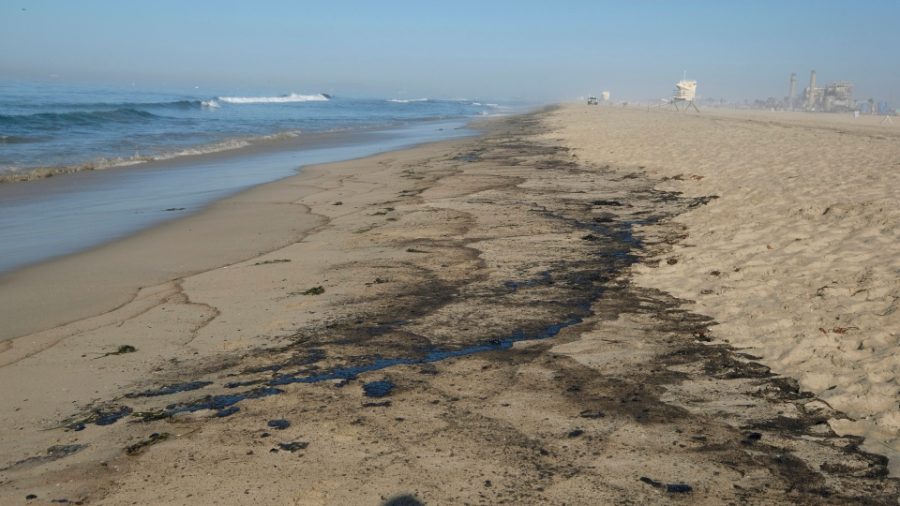Devastation On the California Coast
Oil that was washed up from the ocean. Photo taken in Huntington Beach, CA, on Oct. 3, 2021.
November 1, 2021
Off the coast of Southern California, thousands of gallons of oil gush into the Pacific Ocean and wash up onto shores due to a recent oil spill. The effects are devastating to local ecosystems, but officials have been able to slowly heal and restore wildlife inhabitants.
The spill was first discovered on Oct. 2, 2021, offshore of Long Beach, CA. “Investigators believe a 1,200-foot cargo ship dragging anchor in rough seas caught an underwater oil pipeline and pulled it across the seafloor, months before a leak from the line fouled the Southern California coastline with [oil],” states the newspaper USA Today. They agree that around 126,000 gallons of oil spilled into the sea, spanning over approximately 13 miles, or 8,320 acres. There have been no reported health risks to the public yet.
Oil spills can cause significant damage to coastal ecosystems, from wetlands to the ocean itself. “Oil floats on the surface of salt and fresh water,” explains Sciencing, a website containing information about all science-related topics. “Over a very short period of time, the oil spreads out into a very thin layer across the surface of the water. This can block sunlight from reaching oceanic environments, which can severely impact producers and the entire food chain of an ecosystem.”
“I heard about [the oil spill] that morning because I was coming back from Newport Beach that morning, and I still saw people out surfing,” shares science teacher Mr. Pagett. He recalls, “When I was a kid I used to go to the beach, and you would get little black tar chunks stuck to your feet.”
There are multiple tactics for cleaning the oil out at sea, which are skimming, in situ (in original place) burning, and chemical dispersants. Each method is used in different situations depending on the climate and weather conditions of the oil’s location. For example, the skimming method is not suited for rough seas or windy conditions. “In California, authorities are collecting oil on the surface of the water using mechanical equipment called skimmers,” according to The Verge, a website that covers science and technology topics. “And they’ve set up barriers called booms to try to stop the oil from spreading.”
While the effects of the oil spill may last for a lengthy period of time, hope is on the horizon that wildlife, beaches and the sea will recover as soon as possible, with the help of humans and our motivation to set things right.


